This article originally appeared in the May 2014 issue of The Spectrum Monitor Magazine.
Like many amateur radio operators, I became interested in HF radio because of my real passion for shortwave radio listening. During my first fifteen years as an SWL, I relied on portable receivers, in my case, the Zenith Transoceanic, Realistic DX-440, and Grundig YB 400. The Zenith was my home radio; I traveled with the DX-440 and YB400. I felt like I had the world at my fingertips.
In the mid 1990s, as an undergraduate, I decided that I would pursue my ham radio license–while on my student budget, I dreamed about upgrading to a proper tabletop receiver like a Kenwood, Icom, JRC or Drake. But when I found out the real cost of buying an HF transceiver (gasp!) I realized that all of my resources would go into a transceiver, and the receiver would just have to wait.
Then, as I was studying for my license in 1997, ham buddy Eric McFadden (WD8RIF) invited me over to his house to test drive his Icom IC-735 transceiver. Eric, along with another friend/elmer, Mike (K8RAT) encouraged me to look for a used IC-735 for an affordable first HF radio.
I recall very well tuning around the ham bands at Eric’s QTH and being most impressed with how the IC-735 seemed to pull signals out of the static. It was my first time ever tuning a tabletop rig, and I was instantly hooked. Later, I asked Eric if the ’735 could also tune in shortwave radio broadcasters? His energetic response: “Sure! The ‘735 is general coverage,” then demonstrated by tuning to the 31M band.
Needless to say, I was absolutely amazed by the number of stations one could hear on this ham radio transceiver. Of course, its sensitivity surpassed anything I had ever owned, especially considering that the rig was hooked up to a proper outdoor wire antenna. I realized then that a ham radio transceiver and receiver–in the same radio–were within my financial grasp.
So, what is “general coverage”––?
A ham transceiver with “general coverage” means that the receiver portion of the radio is not limited to the ham bands only; these receivers typically receive between 100 kHz and 30 MHz (i.e., the full medium and shortwave radio spectrum). Many transceivers, starting in the 1980s, employed a general coverage design as a feature of the radio. Some radios implemented general coverage receiving better than others. In most cases, there was a compromise to performance when the receiver was opened to general coverage reception, so many manufactures held to a ham-band-only platform to optimize performance where hams sought it most. Today, receiver architecture can better accommodate general coverage without compromising sensitivity and selectivity on the ham bands.
Still, in 1997, my Icom IC-735 met all of my ham radio and SWLing expectations. For years, in fact, it was my main SWLing rig. Was the IC-735 as good as a proper tabletop receiver? No. The truth is that its filters and performance were most favorable for the ham radio bands. But as I mentioned, this compromise is much less profound in current transceiver design, and general coverage is status quo.
Benefits of general coverage
While the benefit of having a transceiver that can tune the full broadcast band may seem obvious, there are two reasons I always have at least one general coverage transceiver in my radio arsenal:
- Since I like to travel and save space, a small general coverage transceiver (e.g., the Elecraft KX3) kills two birds with one (portable) stone;
- If an emergency, such as a dire weather event were to occur, general coverage will allow me the ability to monitor international broadcasters and local AM (mediumwave) stations while still performing any emcomm (emergency communications) duties.
Another advantage to owning a proper HF transceiver is that, if you currently do not hold an amateur radio license, this may just be the push you need to get your ticket! All you’ll need to do is take two multiple choice tests (Technician and General) to unlock the full potential of your HF transceiver, and you’ll soon enjoy hamming it up with the rest of us.
Cons of general coverage
As I mentioned, general coverage transceivers can present something of a compromise in performance; after all, the rig’s main duty is to perform on the ham bands. Here are a few compromises to be aware of:
- With a few exceptions, purchasing a ham transceiver is pricier than purchasing a comparable dedicated broadcast receiver
- AM filters are often much narrower than broadcast receiver filters
- In many radios, you may be faced with a choice of optimizing filter selections for ham radio use (SSB or CW) or broadcast use (wide AM filters, etc.)
- Older general coverage transceivers (circa 1980s and 90s) may have somewhat compromised ham band receive performance
- Some general coverage transceivers may actually lack AM mode. All broadcast reception will basically be tuned via SSB (or better known as ECSS)
- General coverage transceivers typically lack synchronous detection
Another consideration: while anyone can purchase a general coverage ham radio transceiver, until you hold an amateur radio license with HF privileges, you cannot legally transmit using your radio. I doubt that any readers would consider doing this intentionally, but again your radio is designed to transmit, so this could be done accidently especially if you’re not familiar with transceiver functions. Transmitting unintentionally can have more than legal repercussions: 1) if you transmit with a mis-match between your transmitter and antenna, you could harm the finals in your transceiver; 2) you could damage your radio and/or antenna if using a receive-only antenna (like a mag loop); and 3) you could even receive RF burn. To avoid this, and make it foolproof, search the web for modifications to temporarily disable “transmit” on your radio if indeed you never intend to transmit.
A note about power supplies
Unlike stand-alone receivers, most general coverage transceivers require an external DC power supply. If you do not have a power supply, you will need to fit this into your budget. Power supplies can be costly, but also an investment in longevity. With a little knowledge up front, you can be selective and save on your power supply purchase. As I have been using the same power supply (an Astron RS-35A) since 1997, I turned to my friend Fred Osterman, president and owner of Universal Radio, for suggestions on power supplies currently in production.
Fred pointed out that if your only goal is to power a transceiver for the receive function, there is no need to invest in an expensive power supply. He suggests a reliable, regulated power supply, such as their popular $35 (US) Pyramid PS-4KX: at 3.5 amps; indeed, the PS-4KX will be more than enough power for any transceiver in receive mode.
Of course, if you plan to transmit at full power–and unless you have a QRP radio–you will need a power supply that can handle the load. For this purpose, Fred suggests two excellent options:
- the affordable, portable and lightweight QJE PS23SWI 23 amp switching power supply ($79.95 US), or
- the Astron RS-35A 25 amp linear power supply ($179.95 US)
Again, I’ve had my trusty Astron RS-35A since 1997, so once you’ve invested in a good power supply, you should be all set for many years–and radios–to come.
Transceivers: Good bets for $1,600 US or less
There are dozens of general coverage transceivers currently on the amateur radio market. Indeed, I don’t believe there are any rigs now in production that do not have a general coverage receiver, or at least the option to add it. Prices vary greatly, but I will assume that most SWLs that are considering the leap into amateur radio will want a radio that costs less than the price of a tabletop radio/transceiver combo. Just to keep things simple, we’ll limit our list to $1,600 US or less, beginning with the least expensive option.
Alinco DX-SR8T ($510 US)
The DX-SR8T ($510 US) is one of the most affordable general coverage transceivers on the market. To be clear, the DX-SR8T lacks many of the frills and features of pricier rigs, but it’s a surprisingly good transceiver and, of course, general coverage shortwave receiver. Indeed, Alinco actually markets a receive-only version of this radio (the DX-R8T, $450US); it is identical in every respect to the DX-SR8T, but simply has no transmit function.
While I have only used the DX-SR8T on a few occasions, I have spent a couple of years with the DX-R8T, and even reviewed it extensively in the SWLing Post. My DX-R8T began life as a review unit that I purchased––it was an early production unit, and even retained the transmit LED indicator found on its sibling, the DX-SR8T. Consider paying the extra $60 US for the DX-SR8T, and you’ll have a basic, full-featured transceiver.
You can purchase the IC-7200 from Universal Radio or other ham radio equipment retailers.
The Icom IC-7200 ($900 US)
The IC-7200 delivers a lot of performance for a sub-$1,000 price. Its general coverage receiver will rival that of the venerable R75, and its AM filter can be widened to 6 kHz. Ergonomics are better than average. Plus, it has Icom’s twin passband tuning: the IC-7200’s general coverage receiver actually tunes from 30 kHz all the way to 60 MHz. The IC-7200 is a fantastic value.
You can purchase the IC-7200 from Universal Radio or other ham radio equipment retailers.
The Elecraft KX3 ($900 kit; $1,000 factory pre-assembled)
The Elecraft KX3 is my general coverage transceiver of choice. There’s so much about this radio that I like: it’s nearly as compact as my portable shortwave radios, it’s a full-featured transceiver, it can operate on batteries, it has good ergonomics, and is made and supported by Elecraft, right here in the USA.
Its sensitivity and selectivity rival radios three times its price. The only negative I can point out about the KX3, in comparison with many other general coverage transceivers, is that its AM filter is limited to a width of 4.2 kHZ. When I first learned of this, I thought it would be a deal-killer for me. But I was wrong. The audio sounds much more robust and “wide” than I would ever have guessed. It’s excellent. Want more details? I made an extensive review of the Elecraft KX3 in the SWLing Post.
You can purchase the Elecraft KX3 directly from Elecraft.
Note: Elecraft tech support can instruct you in disabling “transmit” on the KX3, if you wish.
Update: Also check out the KX3’s new sibling, the Elecraft KX2.
The Kenwood TS-590S ($1,500 US)
The TS-590S has an excellent general coverage receiver and brilliant audio fidelity. With one of the lowest noise floors in the business, the 590S is well respected amongst amateur radio operators and shortwave radio listeners. If you doubt this, see how the TS-590S compares on Rob Sherwood’s receiver test data page.
You can purchase the Kenwood TS-590S from Universal Radio or other ham radio equipment retailers.
Updates
[June 13, 2020] Since originally publishing this article, a number of general coverage transceivers have hit the market. Many of them are very affordable. Here’s a short list of additions:
- Elecraft KX2 (click here to read our full review)
- Xiegu G90 (click here to read more)
- Yaesu FT-891 (click here to check it out at Universal Radio)
Looking to spend a little more?
If you happen to be a ham looking to upgrade their transceiver for benchmark performance, you may be willing to dedicate more funds to your purchase. My buddy, Dave Zantow (N9EWO), a discriminating reviewer for the late great Passport To World Band Radio, is very pleased using his Icom IC-7600 for broadcast listening. He told me recently, “[The IC-7600 is] not perfect, of course, but does perform near excellent and also has a great display [with] a very useful spectrum scope.” Dave has a full review of the IC-7600 posted on his website.
I have also been impressed with the superb broadcast reception of the Ten-Tec OMNI VII ($2,800 US), Ten-Tec Eagle ($1,800 plus wide AM filter) and Orion series transceivers. While the OMNI VII and Orion II will set you back more than $2,000, used original Orions can be found for $1,800 and even less. Ten-Tec still services all of their radios at their headquarters in Sevierville, Tennessee.
Used transceivers
If you would like to save some money, consider searching the used market for one of the radios mentioned above. Alternatively, look for some of these select transceivers that are no longer in production, but are known to have capable general coverage receivers (do note that what follows is simply a selection, not a comprehensive list):
- Icom IC-706MKII, IC-746 Pro, IC-703
(QRP version of the 706MKII), IC-7000
, IC-735
, and IC-745
- Kenwood TS-570
, TS-870
, TS-930
, and TS-940
- Yaesu FT-840
(with optional AM filter), and FT-1000
series (very venerated series and still pricey even used)
- Ten-Tec Orion
and Orion II
, OMNI VII
, Eagle
and Jupiter
Keep in mind, when you purchase a quality used radio, you can get excellent value for the performance it will reward you. The flip side of this, though, is that if you purchase a radio that hasn’t been in production for over a decade, the chances of finding replacement parts become more difficult with each passing year.
For more hints on purchasing a used rig, check out our Marketplace page.
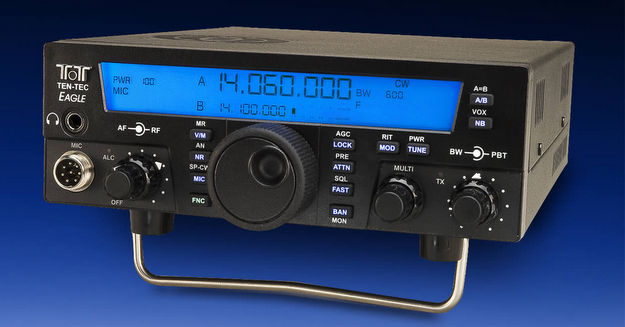
With the option wide AM filter installed, the Ten-Tec Eagle makes from an amazing broadcast receiver. They are available new from Ten-Tec, but can also be found used.
Summary
If you plan on investing in a fine communications radio, it may be best to economize by investing in a good general coverage transceiver. For the prospective ham, the leap from a tabletop receiver to a fine general coverage transceiver may be less than $300. To prove my point, if an SWL planning to get a ham ticket asks about buying the venerable Icom R75, I would encourage spending $250 to get the Icom IC-7200, instead.
Indeed, with modern receiver architecture, there is little reason not to invest in a good general coverage receiver that you can also use to communicate all over the world when you get your ham ticket. And, need I add, it’s fantastic fun for the money.
If you would like to learn how to become a ham radio operator, check out this great introduction at the ARRL website.
Do you have a radio suggestion that I did not mention? Please comment!



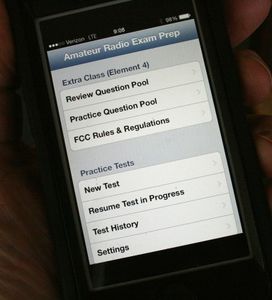
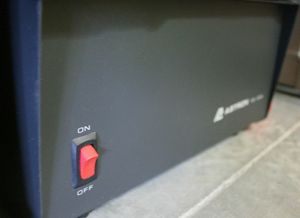
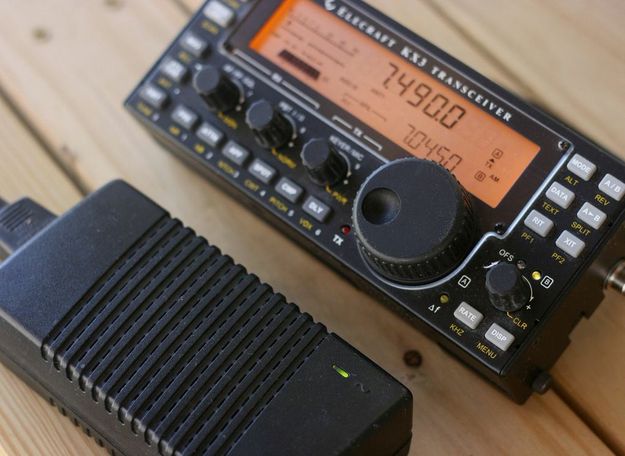
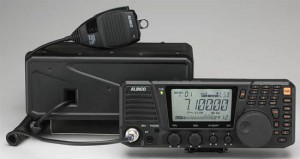
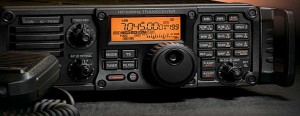
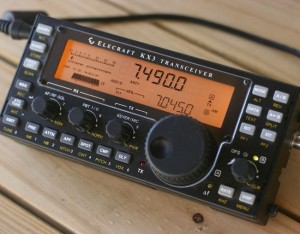
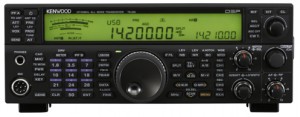
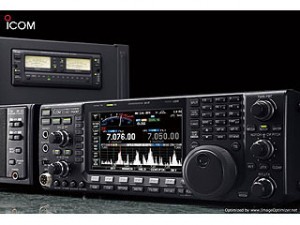
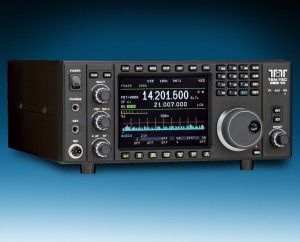
Hey Thomas, hope you’re doing well specially after the storm. Was wondering if someone is going to do a review of the Xiegu 6200? Thanks Dave B. KC1LPS
My email
[email protected]
Would a Yaesu Ft-450D be a good device for SWL and later for communications? I can get a good deal on one of them. If yes, 1- Would just not plugging in the mic prevent damages to the transceiver? 2- Any idea for an antenna for it for SWL?
Thanks
Anybody here who knows how to disable TX on a IC-7200? I use this TRX with active loops and want to prevent TX which can destroy the inline electronics. TX power level is set to Low and Mic is removed.
Any tip is welcome.
Simples! Remove the mic!
I disabled the RF stage, way better. Thanks for reply anyway.
It’s disappointing how some of the best receivers ever made have been missed, notably the JRC range; NRD535 is an incredible bit of kit and wipes the floor with many others.
It can be had for £800 – £1000 GBP and is as reliable as the day is long!
Glad to see the KX3 is included as right up there with the best of them in it’s shortwave listening capabilities.
I have a very silly question, but perplexing to me none the less. I really like to use the superb receiver in my KX3 for shortwave listening, but am not sure how to tune my antenna for the non-ham frequencies. I am running my KX3 through a LDG Z-11Pro antenna tuner which works great for the ham bands. I have the tuner in the circuit since I also have a Yeasu FT-897 running through the tuner as well since it does not have a tuner but shares the same antenna as the KX3. When using the KX3 I simply push the button on the tuner that lets me get directly to the antenna straight through. I then use the antenna tuner in the KX3 to tune my dipole – works very well.
However, when I want to listen to the shortwave bands and attempt the same approach the KX3 tells me I am out of band and does no tuning. So – how do I tune my antenna for shortwave, or maximize its performance for the shortwave bands when i am SWLing?
Robert
I notice that you also use / have reviewed current technology SDR receivers (ELAD FDM-S2, for example). Bandwidth limitations aside (I am referencing the specific limitation of the Elecraft KX3), how would you compare the performance of a current, mid-level tranceiver with general coverage, such as the Icom IC-7100, to the performance of a current model SDR (i.e., for listening to SW broadcasts). One advantage I see is the user interface of SDRs which make it easy to navigate international broadcast stations, etc.. The UI is tailored for ‘listening’. That said, I would do without state-of-the-art UI if the RF performance of a transceiver provides a compelling advantage… THANKS!
Wow–Tom that’s and easy question with a complicated answer! As a home receiver, I almost always side with a good SDR for broadcast reception. An SDR allows ultimate flexibility for notching noise, LSB/USB sync lock, wide bandwidths, and tweaking what you hear. Since you see everything on a spectrum display (and can record the spectrum and audio), it’s incredibly versatile. For sensitivity and selectivity, a good modern general coverage transceiver will be pretty competitive with an SDR. For example, my Elecraft KX3’s sensitivity on AM rivals that of my WinRadio Excalibur–but the audio I can produce from the Excalibur will be far superior to that of the KX3. Also, if there’s adjacent interference or a het in one of the sidebands, the Excalibur can handle that in seconds where the KX3 might take some time. I know of no “mid-level” general coverage transceivers that have synchronous detection either.
Honestly, I see the general coverage transceiver as a very useful and functional broadcast receiver. Many hams don’t even realize their gen cov transceiver can do this! But if you want the best versatility in a receiver, go for a good 3rd generation SDR like the WinRadio Excalibur, Perseus, FDM-S2, etc.
-Thomas
I would like to find a good HF Transceiver for MW DXing.
I currently own an ICOM 706MKII and it is a good receiver but somewhat suffers on the AM broadcast band. Any suggestions from anybody would be appreciated.
Thank you.
Hi, Juan,
I know of very few HF transceivers that perform really well on the AM (medium wave) band since they are designed to perform best between 160-10 or 6 meters. Perhaps someone else can chime in, but my guess would be that an SDR like one of the Flex series or, perhaps, a higher-end transceiver might perform ok on medium wave. Good question.
-Thomas
Thomas,
Thanks for the reply.
I agree regarding HF transceivers. My ICOM is deaf on the AM band, but I have heard it is attenuated on purpose by ICOM.
Juan
New reply to old thread: I have heard that too, and the reason is simply Intermodulation Distortion aka Intermod. Since many signals on SW / HF are weak a local (or even high-power remote at night over skywave with these no-sunspot conditions) station will swamp the receiver if it is unable to knock it out. I would think on most radios it would be switchable, but apparently not in this case?
FWIW, AM / MW band-stop filters are available from the RTL-SDR people, NooElec, and others. In addition, there are high pass filters available designed to knock out everything below 1700 KHz (often higher due to slope / Q / price issues), and a few even allow transmission; I myself bought a 200 watt one with a steep skirt (and price!) that allows 1800 KHz but blocks out everything below.
The maker’s address: http://dlwc.com
Standard version available from DX Engineering (where I bought mine, link in his web site).
I know you want the opposite, but hopefully this is a good explanation. I’m presently dealing with horrible RFI & MW intermod (lots of 50kW during the day) trashing my HTs.
icom 745 has lo band antenna input and works well on mw bcb
Just to update the details of IC-7200 in question. The AM filter on the EU model will go up to 8 kHz which is perfect for the SWL requirement, I am sure the other versions will do the same. From the price point it is a very reliable and excellent transceiver ideally suited to SWL as well as transmitting if you hold a license of course.
I have also tried the SDR scene for my amateur radio and SWL forays. I can say without prejudice that the 7200 holds it own very well for some that costs less than £1k compared to the Flex I used to own and cost me £4k including the PC!
“specifically, he mentions the IC-706, IC-7000, and IC-746Pro in separate PDFs that you can download from his web site”
Its a good read, that’s where I got the idea for the IC-7400 (The UK badge IC-746-PRO) I had the MW and wide band mods done, made quite a difference at the lower bands, as well as opening up civil air band etc
Excellent article on the benefits of using a transceiver as a general coverage radio! I myself have owned and used a FT-920, IC-756 PRO II, and IC-7000 for SWBC DXing over the years. However, most transceivers make sub-par medium wave DXing rigs, unfortunately, although some can be modified for better results.
Typically, a ham transceiver is severely “deaf” below 1.6 MHz on medium wave and longwave, as sensitivity is poor in that region of the bands. This is usually due to high pass filters that roll off reception below 160 meters to keep strong MW signal break-through at a minimum in the ham bands.
Well known MW DXer Bjarne Mjelde has written articles on certain transceivers that are useful for MW DXing, especially with a few modifications that he details. Specifically, he mentions the IC-706, IC-7000, and IC-746Pro in separate PDFs that you can download from his web site: Arcticdx.blogspot.com. Bjarne’s writings are quite insightful and detailed on the use of these transceivers for medium wave.
I’ll add the Alinco DX-70 as a good used transceiver that has decent general coverage. As for powering it, and everything else in my shack, I have put the power supplies away and am powering everything with a trickle-charged deep cycle RV battery. This also gives me the option of solar power in the future. And there are two benefits: it costs less in hydro costs to run the station and I can still operate during power failures.
Totally agree, with the Transceiver market moving a lot more that the receiver one, its a logical place to start (Taking SDRs aside) I opted for an ICOM IC-7400 (HF/50MHz/144MHz Tx) which I use for a receiver, full DSP, twin VFOs etc, as well as having a very easy wide band mode I can listen to VHF airband etc
http://www.icomuk.co.uk/categoryRender.asp?categoryID=3926&productID=727&tID=647
Derek